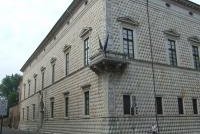
The WHS site includes several buildings from different periods. The Castello Estense and the Palazzo Municipale are from the medieval period, while the Palazzi Diamante, Guido d'Este and Turchi-di Bagno are typical buildings of the renaissance period.
Buses #1&9 link the station with the Castello Estense and the Parco Pareschi.
Keep reading 0 comments
We landed on Efate Island in August 2010, the 14th. Just four days after a 7.3 magnitude earthquake which epicentre was only 35km from Port-Vila. We didn’t know about it, the earthquake was very impressive to local people because of its proximity but nothing seemed to be destroyed.
Nothing? … hum well … unfortunately the WHS of Chief Roi Mata has suffered a landslip just at the entrance of the Fels Cave in Lelepa Island (just north-west of Efate). Of course it was prohibited for us to get into the cave during our tour. The guide told us that a Unesco representative would come and see what can be done. I don’t know what is the situation one year later …
Nevertheless, we had a very pleasant guided tour. Let me explain what you can expect:
-Introduction to the Chief Roi Mata story at the museum in Port-Vila.
-Visit of the domain where Roi Mata lived, a dance show is performed by local people.
-Entrance in the cave where he died (if you are luckier than us).
-Boat trip to Hat Island where he was buried with hundred of its followers.
-Lunch in a village with local people.
I won’t tell the story of Chief Roi Mata here cause you can find it easily on the net, but I can tell you that this WHS was very pleasant to visit as it is one of the very few cultural Unesco site in this part of the world. Everything looked well …
Keep reading 0 comments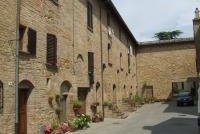
The monumental buildings surrounding the Piazza Pius II were certainly impressive, the white masonry of the duomo contrasting with the brown stone of the Piccolomini and Amouidi Palaces. But I found the newly restored houses on via della Casa Nuove equally interesting.
I reached Pienza by bus from Buonconvento station.
Keep reading 0 comments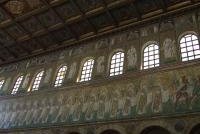
This is truely a city of stunning mosaics, and all but one of the 8 sites listed in this WHS is decorated with the most colourful of mosaic art. By contrast the Mausoleum of Theodoric has a few faded frescoes and a red stone hip bath. Why was this included in the WHS?
The two churches of St Appolina, one in Ravenna, the other in Classe were for me the most outstanding. I travelled between the two by bus #4 and by train.
In 2011, to visit all 8 sites cost E19.50.
Keep reading 0 comments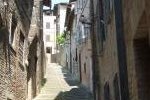
This is the town of steep streets, one of the steepest being via Raffaello, named for the artist who was born in a house on its slopes. At the top of the street in a shady park I found him as a bronze statue.
Besides the Ducal Palace and the Duomo the WHS includes a number of other palaces, notably Comunale, Odasi and Palma which I manged to find amongst the narrow streets.
There is no railway station in Urbino, so I reached the town by bus from Pesaro station.
Keep reading 0 comments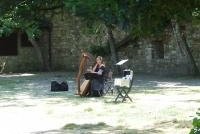
The haphazardly placed tower houses seemed to me to be an earthquake hazard. Maybe that is why there are no longer 72 standing. The walls and bastions seemed more structurally sound.
La Rocca was taken over by artists and musicians which provided a satisfying backdrop for my picnic lunch.
The nearest station to San Gimignano is at Poggibonsi, from where there are frequent buses to the Porta San Giovanni.
Keep reading 0 comments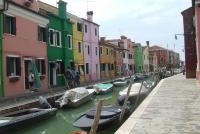
Having seen the streets, piazzas and canals of Venice on previous visits, this time I decided to visit the Lagoon. Armed with a 12 hour ticket I took a Vaporetto LN from Fondamente Nova. This vessel cruised past St Michael's (Cemetery) Island to Murano with its lines of glassworks. We then continued past Mazzorbo and Torcello to Burano. I could see that Torcello's campanile was wrapped in scaffolding so I disembarked in Burano to explore the narrow canals with their colurful houses, and also for an excellent seafood lunch.
Returning to Venice I went to the church of San Giorgio Maggiore and for E5 took the lift up the campanile to get a bird's eye view of Venice.
Keep reading 0 comments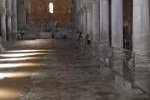
The excavation of the foundations of the Roman town are still a work in progress, but the forum with its marble columns is the most obvious remnant. Of greater importance are the 4th century floor and walls of the Basilica, contained within a building only 1000 years old. The ancient mosaics and frescoes are in pristine condition and well displayed.
I reached Aquileia from Venice by travelling by train to Cervignano, and taking the Grado bus from there to the Archaeological Museum in Aquileia.
Keep reading 0 comments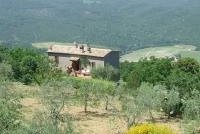
A large area of rural Tuscany, the Val d'Orcia boasts endless vinyards and olive groves spread over an undulating landscape.
A comfortable way of seeing this area is to take the Treno Natura from Siena on one of its periodic perigrinations - mostly on spring and autumn weekends. At other times the nearest station is at Buonconvento. From here I took buses to Montalcino and to Pienza. From both of these hilltop towns there are extensive views over the landscape.
Keep reading 0 comments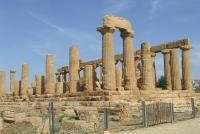
Catching an early bus outside Agrigento station I reached the Valley of the Temples just as the gates opened. This enabled me to make a tour of the temples of Concord, Juno and Hercules before the crowds arrived. Equally interesting to me though were the 19th centuary bronze statues scattered amongst the ancient Greek ruins.
Keep reading 0 comments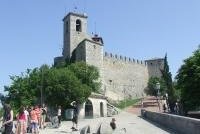
There are no railways in San Marino, but there is a frequent bus service from in front of Rimini's train station to the Porta San Francesco. I travelled in the company of a bus full of Russians all intent on shopping for tax free designer label goods in the tiny Republic. I too wonder where the OUV is here.
Keep reading 0 comments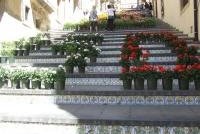
Over several days I managed to visit all 8 of the Baroque towns included in this WHS. All were accessible by train except Pallazolo Acredie which I reached by bus from Syracuse. The highlights were :
Pallazolo Accredie - the restored Basilica of St Paul, and the unrestored church of St Sebastian
Noto - the now fully restored cathedral of St Nicolo, and the church of St Domenico
Ragusa - with 9 churches and 6 palaces listed, the refined church of Purgatory and the masonry details of the church of St Mary of Itria in Ragusa Ibla, and the stylish Palazzo Schnina in Ragusa Superiore
Scicli - the tiled interior of the church of St Michael, the ornate balcony supports of the Palazzo Spadera (tourist office) and Palazzo Benventano
Modica - the church of St Peter and the spectacular interior of the cathedral of St George, well worth the climb to see this
Caltagirone - famed for its tiles, especially the monumental staircase leading to the church of Santa Maria del Monte, and tiled murals dotted through the town
Militello - the smallest of the towns with the church of St Nicolo (now a museum) and the church of Sta Maria della Stella and its campanile
Catania - the largest town with many Baroque buildings including 4 churches in via della Crociferi alone plus the church of Sta Agata opposite the duomo and the Palazzo Biscari.
Keep reading 0 comments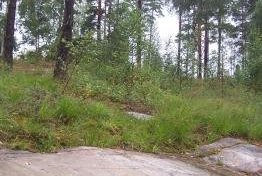
Most aspects of the site have already been covered in the reviews here, and I am in agreement that this was a really nice site to visit for my first taste of rock carvings. The red highlighting used certainly makes them easy to spot, but I am not really sure if this really is a good way of presenting them or not. As Els says the red colouring is one of the things that stays with you after visiting the site.
I would like to give a big congratulation to the tour guide who was there when I visited in August 2011. He was just standing by the Vitlycke panel and did a great job at not only describing the carvings but also putting them in context as well as describing various interpretations of them over the course of the last 150years. The talk he gave was both accessible and intelligent and it was really good to be treated with so much intellectual respect at a WHS. The museum was also interesting and had a slightly more innovative approach than many other museums that are attached to WHS. I also liked the fact that there were a big pile of bean bags to lay down on and watch the animation being projected onto the ceiling, it was a lovely reward after an early morning flight.
I found it very worthwhile to follow the trails off from the main panels to see some of the smaller rocks with carvings on them, …
Keep reading 0 comments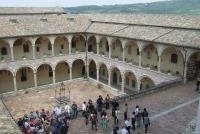
The train arrives at the village of Santa Maria dei Angeli, from where buses run to various points around Assisi. I alighted at Piazza Matteotti, the highest point, and close to the cathedral of San Rufino. Not an outstanding edifice with its austere exterior and drab interior.
From there I walked down to the Basilica of Santa Clara, a more interesting building, but plainly decorated inside.
My favourite however is the small church of Santa Maria of Minerva. The ornate altapiece is spectacular.
After passing through the town I descended to the Basilica of San Francisco. The frescoes here are amazing, and it was clear from the crowds here that most visitors never get to go beyond this building.
My last stop was the Abbey of St Peter's Monastery, an interestingly shaped building, before going to the bus stop in the Piazza dell'Unita d'Italia to catch a bus back to the station.
I made this visit on a day out from Rome.
Keep reading 0 comments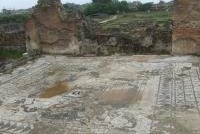
This site covers a huge area, including a wealth of coastal, rural and mountain scenery. Besides this I took trains to find the ancient Greek enclave of Velia (near Ascea station) with its mosaics. I then returned to Paestum (which has its own station) to see the statuesque temples of Athena, Neptune and Hera, all reminiscent of Athens.
Trenitalia runs a bus service from Battipaglia down the Vallo di Diano to Padula which I took to visit the huge San Lorenzo monastery.
Keep reading 0 comments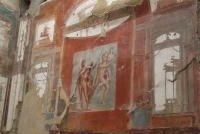
The excavations of Pompei are huge, so I devoted a half day to walking the streets, starting at the amphitheatre and finishing at the Villa of Mysteries. I stopped off to view frescoes, the pristine mosaics and complete dwellings. But the highlight was the brightly coloured frescoes of the Villa of Mysteries.
From the nearby station I travelled a short distance to Torre Annunziata to visit the Villa of Poppea at Oplontis. A much smaller site but with many colourful frescoed walls.
Travelling on from there by train to Ercolano I soon reached the excavations of Herculaneum. I thought the houses lining the Cardos here more interesting than those at Pompei, and the decorations were still spectacular. Although quite spread out, this site is much easier to navigate, as the whole site can be seen from above.
Keep reading 0 comments
The scenery around this coast is simply stunning, so to enjou it I took the bus from Salerno to Sorrento, stopping off at Cetara, Amalfi and Positano en route. The most rewarding visit was the side trip by bus from Amalfi up to Ravello. I too found this a delightful village with spectacular views.
Keep reading 0 comments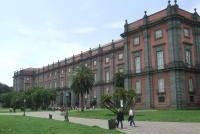
My visit to Naples coincided with the rubbish collector's strike, so I was greeted by foul smelling mounds of rubbish littering the streets. This was particularly acute in the narrow streets and alleys of Spaccanapoli. Nevertheless I managed to visit the cathedral and several other of the listed churches in the area.
More to my taste though were the palazzos of Piazza Bellini which overlook some of the excavated Greek foundations of this city.
The views from the summit of Vomero Hill were excellent, but the scruffy Villa Florida was disappointing. St Elmo's castle was very solid and a place for admiring the views.
But my favourite places were the Palazzo di Capodimento, which I reached by bus R4. This palace, set in a park on a hilltop was quite serene. Another, the Palazzo Reale, facing the huge Piazza di Plebiscito was was open for an art exhibition. The Castel Nuovo and Castel del Ovo were in great locations beside the Bay of Naples.
Keep reading 0 comments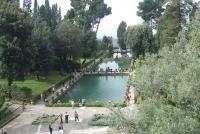
This villa clearly receives the larger share of visitors to Tivoli. The gardens seem to be the main attraction of course with their flowing waterfalls and fountains. Few visitors seemed to venture inside the villa though, but I found it worthwhile to see the palatial frescoed home of Cardinal d'Este.
I reached Piazza Garibaldi in Tivoli by bus from outside Ponte Mammolo metro station.
Keep reading 0 comments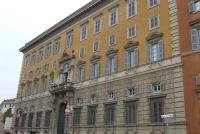
Having visited Rome previously on several occasions and seen all the prominent tourist sights, this year I decided to seek out the more obscure sites included in the WHS inscription.
My first call was the church of San Paolo Fuore la Mura, a monster church beside a metro station in SW Rome.
The rest of the day I spent touring the palazzi, mausolea and churches listed as properties of the Holy See enjoying extraterratorial rights.
Of the churches, San Giovanni in Laterano was lavish and splendid, as also was Santa Maria Maggiore. Santa Maria in Trastevere was rather shabby and insignificant by comparison.
Augustus' mausoleum was a rather insignificant ruin, while Hadrian's was concealed within the Castel Sant Angelo.
The Palaces varied from the shabby and neglected to the pristine serving as museums and offices. My favourite was the Palazzo delle Cancelleria in Corso Vittorio Emmanuele II, where the courtyards housed a collection of Leonardo da Vincio's Big Machines. Another architecturally pleasing example was the Palazzo di Propaganda Fide in the Piazza di Spagna.
Keep reading 0 comments